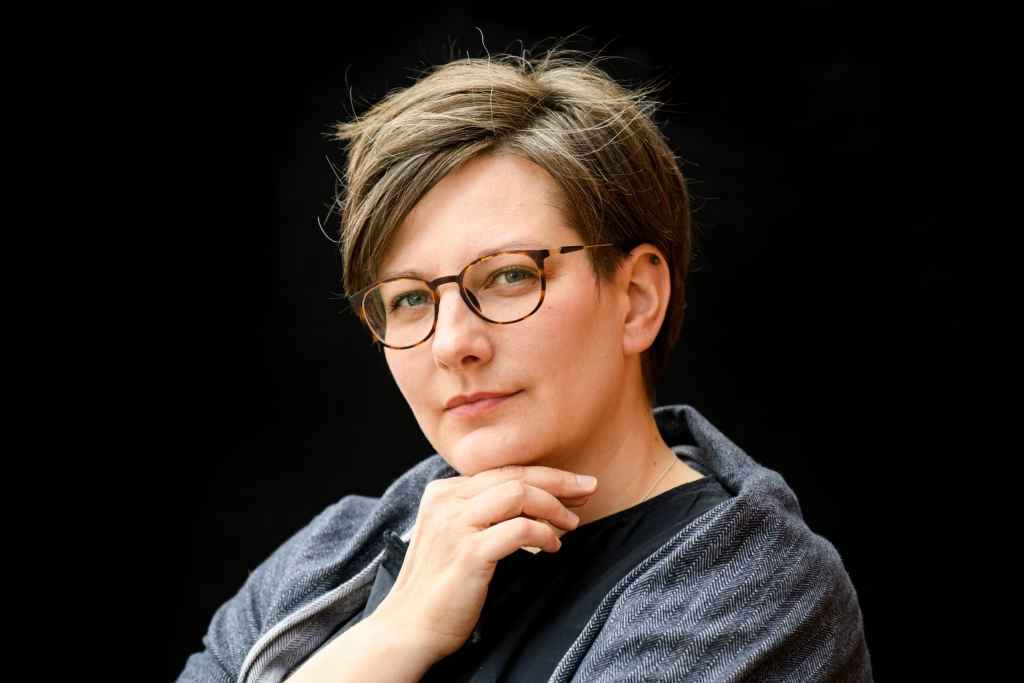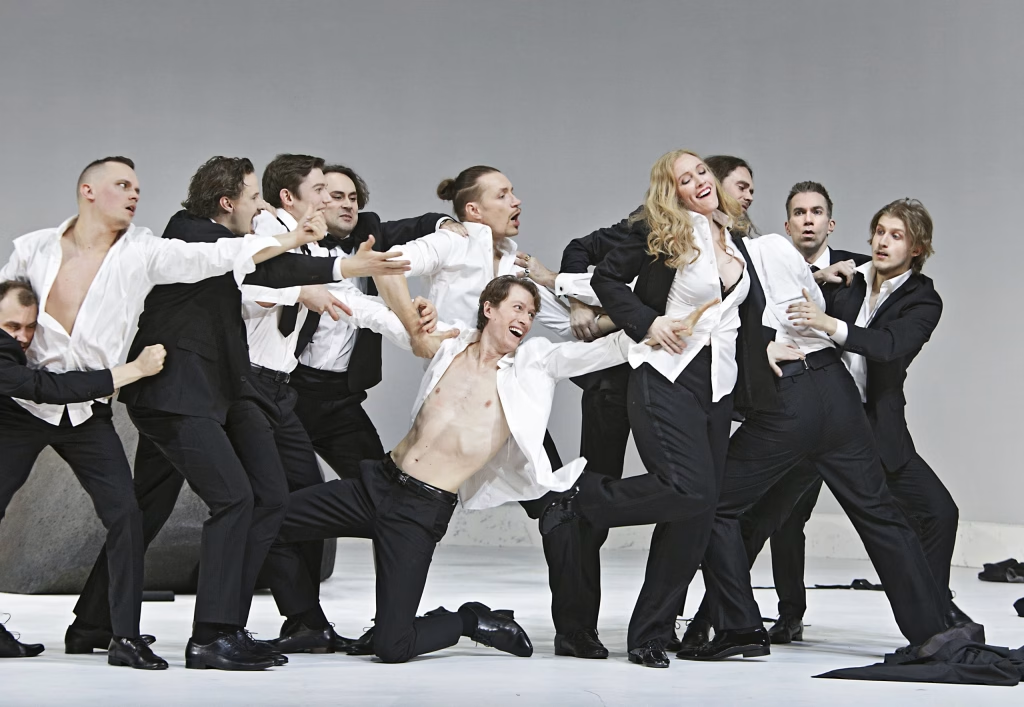
An intimacy choreographer helps create a safe working environment
When Salome premiered in 2022, intimacy choreographer Pia Rickman was brought in to ensure a sense of safety in its more sensitive scenes. Her role is becoming increasingly crucial in the realms of theatre, dance, and opera. In this article, Pia shares her insights on her work and her role in Salome.
What is the purpose and history of the profession?
An intimacy choreographer collaborates with the team and cast of a production to develop scenes involving nudity, simulated sex, or other forms of close physical interaction. Much like a fight choreographer, the intimacy choreographer assists the director in shaping the scene’s dramaturgy while ensuring the performers’ safety and well-being. The goal of this collaboration is to create a safe working environment for everyone involved, including the technical staff.
The first TV productions to hire intimacy choreographers were The Deuce (Alicia Rodis) in the United States and Sex Education (Ita O’Brien) in the United Kingdom in 2018. On stage, the first major productions to incorporate intimacy choreographers were Frankie & Johnny (Claire Warden) on Broadway and Death of a Salesman (Yarit Dor) in London’s West End in 2019. However, the profession had already been established in theatre a number of years earlier.
By this time, research on the topic had been ongoing for about a decade, but it was the #MeToo movement that highlighted the need for structural change.

What is the role of the intimacy choreographer in Salome?
Salome serves as the pilot project for consent and intimacy training at the Finnish National Opera and Ballet. I am pleased to assist performers and the creative team in identifying and discussing vulnerabilities in general, while ensuring that intimate scenes respect the mental and physical boundaries of each individual involved.
Opera often deals with intense themes such as power, passion, suffering, and death. Scenes may involve kisses, lovemaking, and physical intimacy, or depict violence, such as battles, sexual violence, or abuse of power. While performers and the creative team engage with this content from their professional perspectives, until now, little attention has been paid to each individual’s unique experience of intimacy.
In the past, intimate scenes were sometimes minimally rehearsed or improvised, with performers drawing on their personal experiences. An intimacy choreographer helps separate the personal from the professional by choreographing these moments. The goal is to ensure that safety is not just the responsibility of the individual.
Even when directing processes have been otherwise collaborative and considerate, there has often been no clear protocol for handling sensitive content. Artists may have been expected to perform certain actions in the name of art, without discussions about their personal boundaries. Some may have also accepted the notion that disregarding their boundaries regarding subject matter, scene content, touch, or nudity was simply part of the job.
Creating a clear and safe structure for rehearsing and performing intimate scenes has been the most important takeaway of the pilot phase. This has involved all the dozens, even hundreds of people who have directly or indirectly participated in the production.
What other kinds of productions have you worked on?
Salome is the first opera production I’ve taken part in. Most of my work is in film and TV drama. In Finland, my first collaboration as an intimacy choreographer was for Zaida Bergroth’s Tove, produced by Helsinki-filmi in 2020. Other Finnish films I’ve been involved in include Yellow Sulphur Sky and Girls Girls Girls, which premiered in spring 2022. The use of intimacy choreographers is gradually becoming more common in theatre, dance, and opera, too. In addition to this, my work includes teaching, training, and participating in panel discussions.
I also collaborate with academic institutions. Last year, we piloted intimacy training as part of the MA programmes in Acting and Film Directing at ELO/Aalto University and the Uniarts Helsinki Theatre Academy. I promote similar cross-disciplinary dialogue at universities in the UK, where I primarily live and work.

Intimacy choreography has been part of the film industry for some time. What are the similarities and differences in handling intimacy between film and opera productions?
One of the key differences between stage and screen work is, of course, the audience. In opera or theatre, the audience watches performers live, from multiple angles, while in film, actors are viewed through the camera lens, with the story told through editing. This means that stage choreography must be safe and effective from a broad visual perspective. It must also be repeatable in a way that differs from film and TV, where multiple takes are shot, but once a scene is filmed, it’s done. On stage, however, the scene is repeated night after night throughout the season, and may be revived later. That’s why it’s crucial that the assistant director or stage manager maintains continuity in the intimacy choreography throughout the performance run.
The music and vocal expertise, set design, costumes, and dance choreography are, of course, particularly important in opera. For the deeply human moments on stage to be effective, it’s essential to develop methods that also safeguard the artists who interpret these moments.
What is your educational background?
I am trained as a director and acting teacher. Before coaching and training actors, I spent several years working in film and TV drama production as an assistant director and production manager. Besides choreography and technique, intimacy choreography studies encompass safety and consent training.
I am a co-founder of the European Intimacy Practitioners Guild, which aims to promote awareness, standardise best practices and qualifications, as well as support the professional development of its members. Continuous learning and peer collaboration are particularly important in a profession that builds on personal experience. I also co-founded Nordic Intimacy Coordinators, a company dedicated to meeting the industry’s needs in the Nordic region.
Read more about Pia at piarickman.com
More information about the European Intimacy Guild: theintimacyguild.com
More information about Nordic Intimacy Coordinators: nordicintimacy.com
Interview PETRA RÖNKÄ
Photos HEIKKI TUULI
Photo of Pia Rickman EARTHY PHOTOGRAPHY

